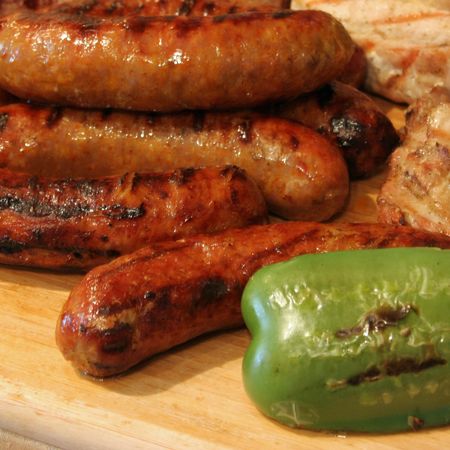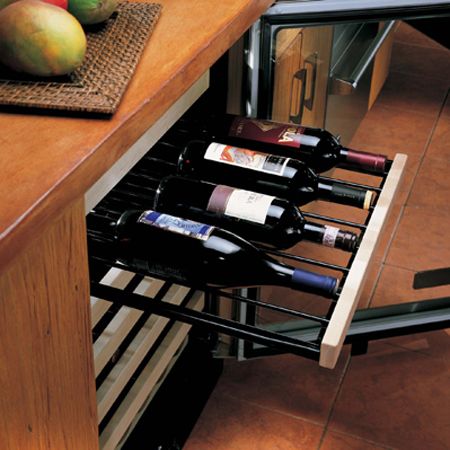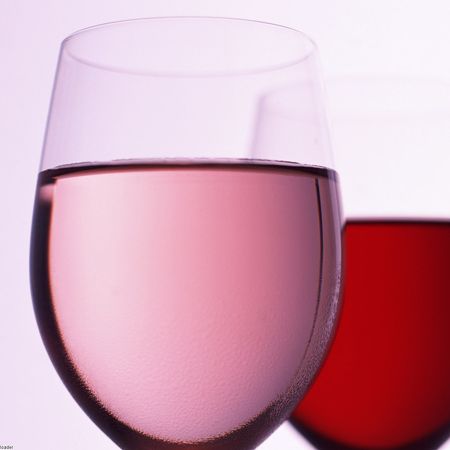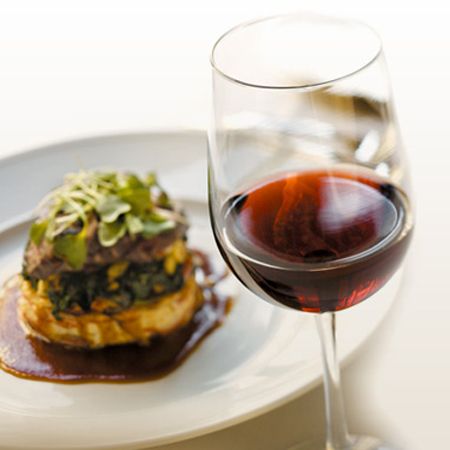Stuffed: A Napa Valley Venison Party

I got the call. My dear friend was invited to an exclusive deer hunt in northern California, but he still had much of last year’s hard-won buck in the freezer. He needed the space. Would I please pick up the venison meat and make something worthy? How could I possibly refuse a friend in need? Especially given the opportunity to create a cooking experience and a dinner with a group of my Napa Valley friends, who cook, eat and drink together often and with great abandon.
We discussed our options for the deer and settled on fresh venison sausage and cured venison salumi. I ordered natural casings from The Sausage Maker, an old-school company in upstate New York, in which to stuff the sausage and salumi. These casings are made from the submucosa, a layer of the intestine consisting mainly of collagen, which are ideal for sausage and salumi.
We gathered in the chef’s kitchen, loaded with fancy tools, and divided up the tasks: measuring and grinding the fresh and dried herbs and spices; peeling and chopping the mountains of red garlic harvested and dried weeks prior. The chefs chilled the necessary pork fat and began grinding it into the huge mounds of coarsely ground venison. In the midst of all this, the winemaker sent me down to his cellar to choose wines fitting for our prep and the ensuing dinner.
I rationalized aged Champagne appropriate for any occasion. I pulled several bottles of Veuve Clicquot Rosé Vintage 1979 and raced it to the fridge to chill down a few degrees below his perfect cellar temperature.
The Chefs were busy stuffing the casings, first with the fresh sausage mixture and then with the salumi components, the latter to be hung in the cellar to cure and dry for a future winter meal. They continually bantered about the perfect coarseness of the grind, the ideal amount of spice.
A few pyramids of locally produced goat cheese were plated, their temperature ideal from sitting out overnight. I uncorked red and white wine, both from France’s Loire Valley, home of France’s greatest chevres. The 2003 Charles Joguet Chinon, made from 100% Cabernet Franc, was earthy with notes of game, herbs and leather. Its medium weight and bright acidity was divine with the richness and slight funk of the goat cheese. The stellar match, however, was 1997 Pascal Cotat Sancerre ‘La Grande Côte.’ This amazing Sauvignon Blanc, whose grapes are grown on pure limestone slopes, has great complexity of mineral, earth, citrus and high acid. I told the group about the very steep vineyards, hand-harvested by volunteer Cotat fans from around the world. The harvesters tie cushions to their rears, holding a bucket in their hands, and slide down the cliffs, picking grapes as they go.
While we enjoyed the last of the Sancerre, the cast iron skillets were heated, but not smoking, and the sausages left to slowly sizzle. If fresh sausages cook too rapidly, the casings rupture and the precious juices are lost. We prepared freshly-milled polenta to accompany the sausage.
In choosing wines for the sausage and polenta, I considered both the flavor and texture profiles of the foods. I looked to France’s Rhône Valley and Italy’s famed Piedmont for inspiration. An incredible accompaniment was 1998 Gangloff Côte-Rôtie. Known for his rich, ripe wines, it complemented the savory earthiness of the venison perfectly, even mirroring the sweet notes of cherry in the polenta. Finally, I poured 1996 Giacomo Bologna Barbera d’Asti ‘Ai Suma.’ Fragrant with sweet berry aromas, the palate was weighty with red cherry, dried fruit, herb, and spice. Always a fan of the acidity displayed in Piedmontese wines, I was not disappointed. Its brightness balanced the richness of the sausage, its fat content ample and succulent. Satiated and contemplating our meal and its preparations, we raised our glasses with the remaining drops of the fine Barbera and toasted all who made it possible.
RECENT POSTS IN Food and Wine Articles


